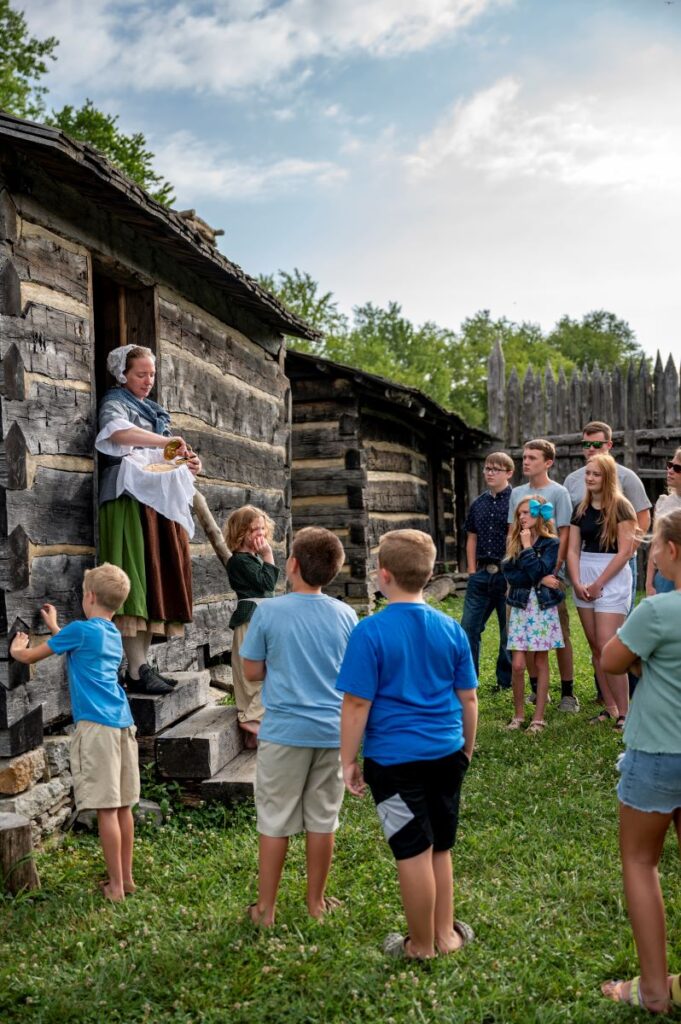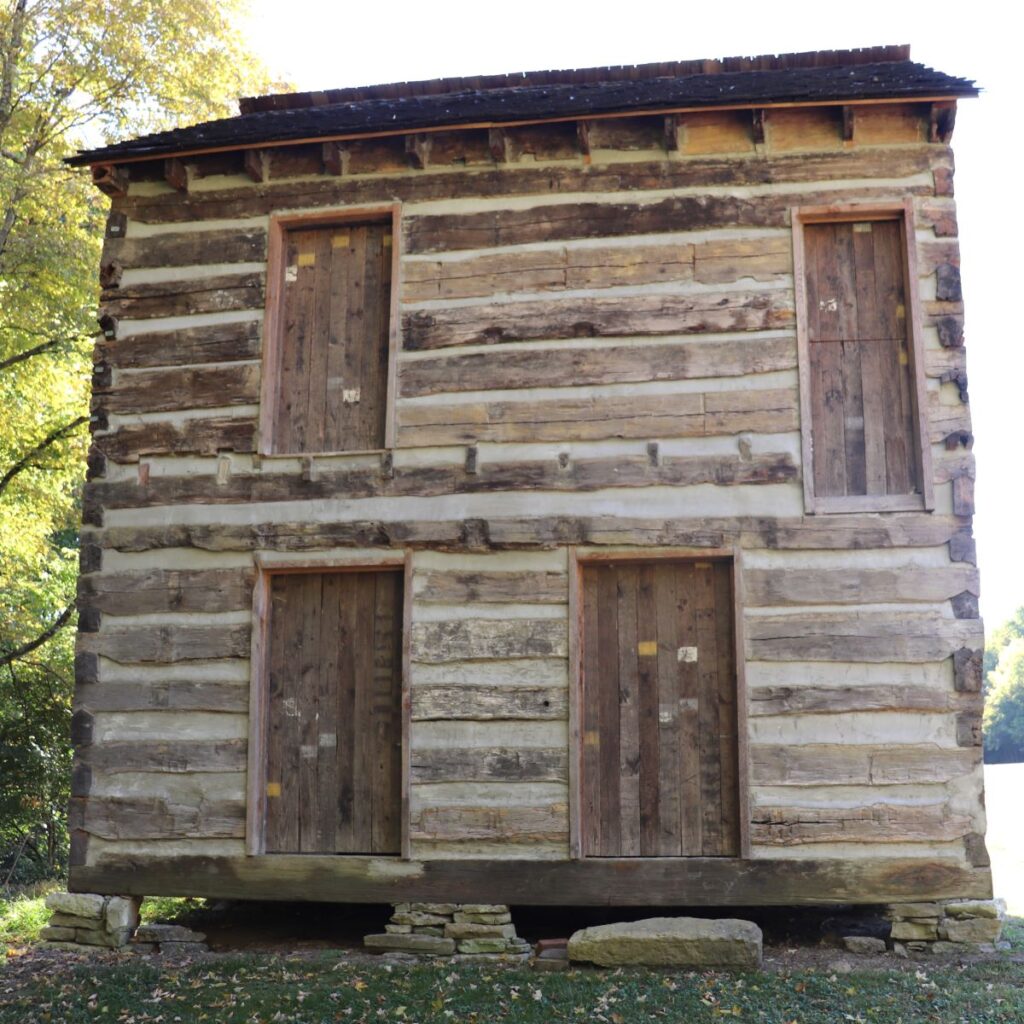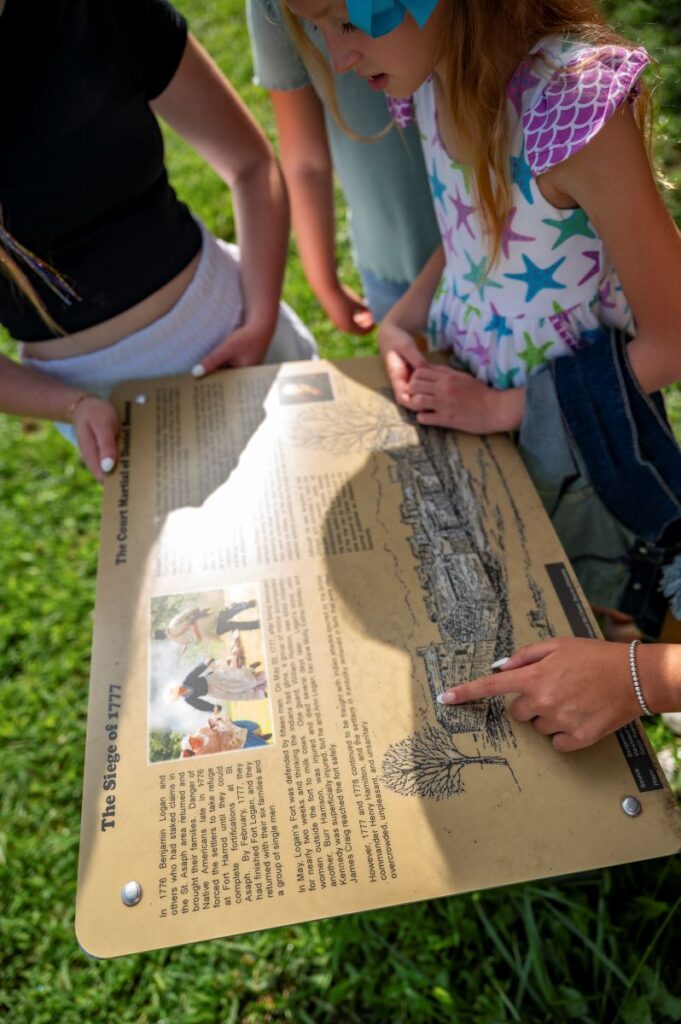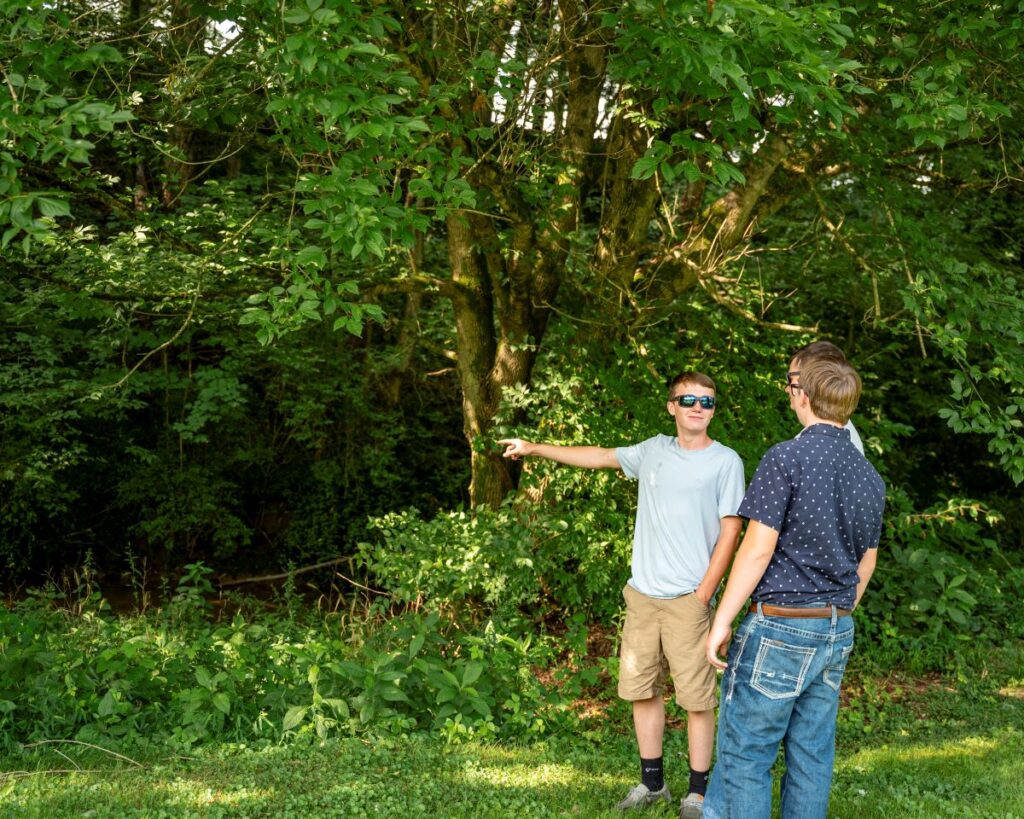Logan’s Fort Park: A Visitor’s Guide
Logan’s Fort Park in Stanford, Kentucky, is more than just a historical monument; it’s a lively center of community engagement and education. This green space surrounds the reconstructed Logan’s Fort and offers visitors a chance to step back in time while enjoying modern-day amenities.



Amenities
The park boasts a range of facilities tailored for both individual visitors and families. Some of the amenities include:
- Picnic areas with tables and benches, perfect for a relaxing meal amidst historical surroundings.
- A well-maintained greenspace for children, ensuring young visitors are both educated and entertained.
- Walking trails weaving around the park, ideal for those wanting a peaceful stroll or a dose of nature.
Events & Programs
Throughout the year, Logan’s Fort Park hosts several events that celebrate its rich history and the broader heritage of Kentucky. Some annual highlights include:
- Historical reenactments, where actors recreate moments from the fort’s past, such as the 1777 siege, giving visitors an immersive experience.
- Craft fairs showcasing local artisans and their crafts, often featuring traditional techniques and materials.
- Educational workshops aimed at school groups and families, focusing on frontier life, Native American culture, and early American history.
Visiting Information
Throughout the year, Logan’s Fort Park hosts several events that celebrate its rich history and the broader heritage of Kentucky. Some annual highlights include:
- Historical reenactments, where actors recreate moments from the fort’s past, such as the 1777 siege, give visitors an immersive experience.
- Craft fairs showcasing local artisans and their crafts, often featuring traditional techniques and materials.
- Download the Self-Guided Tour
Logan’s Fort: A Historical Jewel in Stanford, Kentucky
Logan’s Fort, nestled in Stanford, Kentucky, stands as a testament to the indomitable spirit and determination of early American settlers. Its history is a patchwork of battles, determination, and the spirit of exploration. Delving into its past reveals tales of courage and fortitude, making it an important and cherished part of Kentucky’s rich history.


Origins of Logan’s Fort
In the spring of 1775, pioneers led by Benjamin Logan established Logan’s Fort as a frontier outpost. At that time, Kentucky was the untamed American West, a vast and wild expanse full of promise and fraught with danger. European settlers were drawn to this region by the allure of fertile lands and the hope of a better future. But these hopes came at a significant cost: the settlers constantly faced threats, most notably from Native American tribes who resisted encroachment on their ancestral lands.

Architecture and Structure
Logan’s Fort was designed primarily as a defensive structure. It was a small, fortified settlement encircled by a stout log palisade. The interior housed cabins and other essential structures to support the community living within. Every element of the fort’s design was aimed at protection, from its thick wooden walls to the strategic placement of lookout points.
The Siege of 1777
One of the most defining moments in the fort’s history was the siege it endured in May 1777. Native American warriors, believed to be Shawnee, laid siege to the fort for over two weeks. The settlers inside, under the leadership of Logan, were vastly outnumbered but displayed remarkable resilience and ingenuity.
During the siege, the settlers faced a critical water shortage. The fort’s water supply came from a spring that was, unfortunately, located outside the protective walls. Demonstrating their determination and resourcefulness, the settlers dug a trench from inside the fort to the spring, all the while under the constant threat of attack. This trench provided the fort’s inhabitants with a lifeline, allowing them to access water without exposing themselves to the lurking dangers outside.
The siege eventually ended when reinforcements arrived, forcing the attacking warriors to retreat. But the memory of those harrowing days became an integral part of Logan’s Fort’s lore.

Legacy & Preservation
Over time, as threats receded and the frontier moved westward, the importance of Logan’s Fort as a defensive structure waned. The fort was eventually abandoned, and the passage of time threatened to erase its history.
Recognizing the fort’s historical significance, efforts were initiated in the late 20th century to preserve and restore it. Thanks to the dedication of historians, local residents, and government agencies, Logan’s Fort now stands as a proud monument to Kentucky’s pioneering spirit.
Today, visitors to Stanford can explore the reconstructed fort, where reenactments and educational programs breathe life into its storied past. The fort has become an important educational resource, offering insights into the challenges and triumphs of frontier life.


Conclusion
Logan’s Fort Park, with its blend of history and recreation, promises a unique experience for all its visitors. Whether you’re a history buff, a nature enthusiast, or someone looking for a serene spot to unwind, the park has something to offer. Come immerse yourself in the tales of bravery and perseverance that define this historic landmark, all while enjoying the natural beauty of Stanford, Kentucky.
Logan’s Fort is not just a collection of old logs and faded memories. It is a symbol of the resilience and determination of those who dared to venture into the unknown, facing immense challenges with courage and tenacity. The fort’s walls have witnessed tales of heroism, despair, hope, and survival. Today, as it stands proudly in Stanford, Kentucky, Logan’s Fort serves as a poignant reminder of the sacrifices made by our forebearers and the indomitable spirit of exploration and perseverance that has shaped the American narrative.